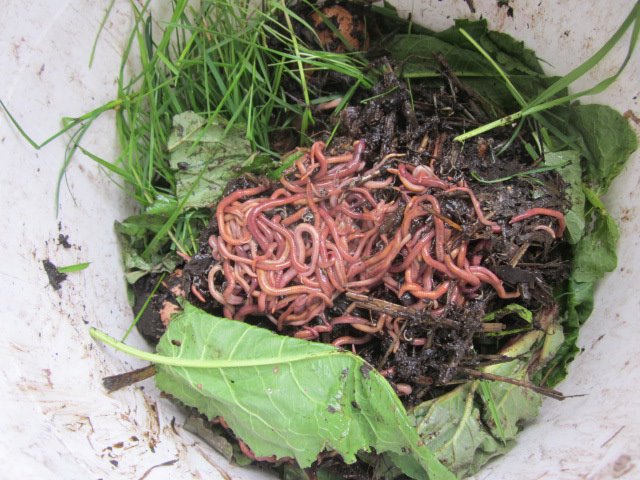Change Your Waste with Red Wiggler Composting: A Total Beginner's Overview
Change Your Waste with Red Wiggler Composting: A Total Beginner's Overview
Blog Article
Recognizing the Perks of Red Wiggler Composting: Just How This Efficient Technique Transforms Organic Waste Into Nutrient-Rich Dirt Modifications
Red Wiggler composting, employing the types Eisenia fetida, offers an engaging approach to natural waste administration, transforming kitchen area scraps and backyard particles right into important soil modifications. This method not just improves dirt fertility however additionally addresses pushing ecological issues, including land fill waste decrease and greenhouse gas exhausts.
What Are Red Wigglers?
Red wigglers, clinically called Eisenia fetida, are a species of earthworm that play an essential duty in vermicomposting systems. These worms are defined by their reddish-brown shade, fractional bodies, and an unique capacity to flourish in organic-rich environments, making them excellent for composting applications - Red Wiggler Composting. Unlike their garden-dwelling equivalents, red wigglers prefer to live in the upper layers of soil, where decomposing matter is plentiful
Normally gauging in between 3 to 4 inches in size, red wigglers have a high reproductive price, allowing them to increase swiftly under optimum problems. They have an unique gastrointestinal system that permits them to process natural waste successfully, transforming it into nutrient-rich castings, which are extremely valuable for plant growth.
Their tolerance to differing dampness degrees and temperature ranges better enhances their energy in vermicomposting configurations, making them a popular selection amongst composting lovers. Additionally, red wigglers are cardio microorganisms, which demands a well-aerated composting atmosphere, making sure efficient decay. Understanding the biological qualities and actions of red wigglers is vital for enhancing their use in sustainable waste management practices.

Advantages of Vermicomposting
Taking advantage of the power of vermicomposting deals a wide range of environmental and farming advantages. To start with, it dramatically decreases organic waste in landfills, consequently minimizing methane exhausts, a potent greenhouse gas. By diverting food scraps and lawn waste to vermicomposting, we sustain an even more lasting waste management system.
Additionally, vermicomposting enhances dirt wellness. The spreadings created by red wigglers are rich in essential nutrients, microbes, and enzymes, boosting dirt structure and fertility. This nutrient-rich amendment advertises durable plant development and raises water retention, decreasing the demand for chemical fertilizers.
Additionally, vermicomposting fosters biodiversity in the dirt ecosystem. The introduction of advantageous bacteria from worm spreadings help in illness reductions and nutrient cycling, developing a much healthier setting for plants.
Financially, vermicomposting minimizes the costs connected with chemical inputs and waste disposal. Farmers and garden enthusiasts can grow premium fruit and vegetables at lower costs, adding to food safety and sustainability.
How to Start Composting
Starting a composting endeavor can be a satisfying and uncomplicated procedure. To begin, pick a suitable place that is well-drained and obtains partial sunshine. This will certainly help preserve a well balanced temperature level, critical for the composting process. Next, choose a compost bin or develop a marked area in your yard, guaranteeing it is quickly available for adding products and gathering garden compost.
Collect natural products such as cooking area scraps, lawn waste, and shredded paper. Go for a balanced mix of 'eco-friendly' materials, high in nitrogen (e.g., fruit scraps, coffee premises), and 'brown' materials, rich in carbon (e.g., dried our website out leaves, cardboard) A proportion of roughly 2:1 environment-friendly to brown products is ideal.
Beginning layering your materials, guaranteeing sufficient air circulation by transforming the pile frequently. This advertises cardio disintegration, speeding up and decreasing smells up the process. Monitor moisture levels; the garden compost ought to really feel like a moist sponge however not overly damp.
Nutrient Profile of Vermicompost
Composting, especially with red wigglers, yields a nutrient-rich item understood as vermicompost. Additionally, it gives micronutrients like iron, magnesium, and calcium, cultivating robust plant growth and enhancing dirt health and wellness.
The microbial activity present in vermicompost better enriches its account, introducing beneficial bacteria and fungis that advertise nutrition availability and uptake in plants. This organic part help in reducing plant illness and boosting soil framework, causing boosted water retention and aeration.

Ecological Impact of Composting
The ecological effect of composting, specifically through using red wigglers, is profound and complex. This method considerably lowers the quantity of natural waste sent out to landfills, which subsequently decreases greenhouse gas discharges, particularly methane-- a powerful factor to climate adjustment. By diverting organic materials from this land fills, red wiggler composting not just assists minimize ecological deterioration but additionally advertises sustainable waste administration methods.

In addition, composting adds to carbon sequestration, as the procedure catches co2 from the environment and stores it in the soil. This all-natural process help in combating environment change while enriching the soil - Red Wiggler Composting. Overall, red wiggler click composting presents a viable, eco-friendly option for waste monitoring and environmental sustainability, promoting healthier environments and an extra lasting future
Verdict
In verdict, Red Wiggler composting offers as a reliable technique for transforming natural waste into important soil changes. The procedure not only enhances soil fertility and structure however additionally mitigates environmental concerns connected with waste disposal.
Red Wiggler composting, utilizing the varieties Eisenia fetida, presents an engaging strategy to organic waste monitoring, transforming kitchen area scraps and yard debris into important soil changes. Unlike their garden-dwelling counterparts, red wigglers like to occupy the top layers of soil, where rotting issue is plentiful.
The castings created by red wigglers are rich in crucial nutrients, germs, and enzymes, improving dirt structure and fertility. The nutrient-rich by-products of red wiggler activity improve dirt structure, increase water retention, and promote biodiversity within the dirt ecological community.In verdict, Red Wiggler composting serves as an effective method for transforming natural waste right into beneficial soil amendments.
Report this page